 |
||
|
||
| ||
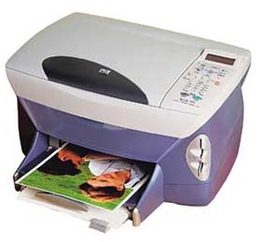 After a bit of experience of handling this digital multifunctional device I arrived at a conclusion that it has become too difficult for ink-jet device makers to compete in printing quality. Price? But it is very low already. So, are there any more parameters vital for a user when he chooses a bubblejet printer? Yes. Prices for cartridges. I hope that some day when the ink-jet technologies will reach its highest degree of perfection the printer developers will start cutting cartridge prices.... But taking it seriously, I must say that now, when the printing quality is excellent, the models have no choice but to expand their services. Therefore, modern printers/scanners/office-combines are accumulating various interfaces, LCD displays and other devices which make them different from their brothers. The tendency of function snowballing doesn't affect much the final price. For example, the today's HP PSC950 combine offers functions of scanner, printer copier and fax, as well as wireless printout of photos via CompactFlash, SmartMedia and Memory Stick cards, and printout of the flash card contents on one sheet of paper. All this costs just $350! The overall price of such separate components will really be much more. Besides, you get rid of cables and PC connection problems. Performance characteristics of the HP PSC950
HP PSC950 capabilitiesAuto mode:
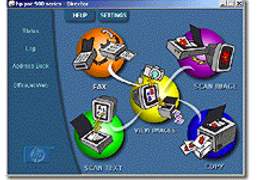 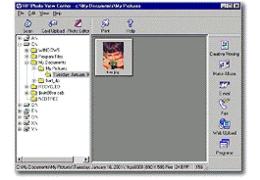 When connected to PC or Mac system:
The device comes with a power supply unit, cartridges, power and telephone cables, detailed user guides (a booklet and an A1 illustrated poster with instructions of quick start-up in several languages); a CD with software and paper samples. Despite its multi-storey design, it's not difficult to reach cartridges as the lid can be opened up.
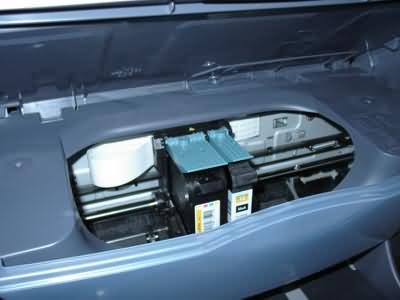 Moreover, the back lid, which opens so that a user can put in special media, is also useful to eliminate paper jam (though it didn't happened when I tested the device) and to remove paper shreds which accumulate with time near the feeder. Beware, the "lock" and "unlock" pictograms pictured next to this lid do not imply fixing of the mechanism for transportation. When I pressed unlock one of the first sheets which came for printing just pushed the lid down.
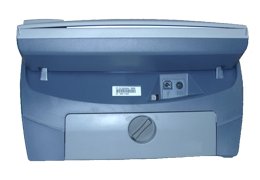 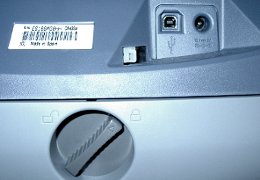 Software installationThe software and drivers of the PSC950 were installed under the Windows 98SE and Windows XP as they are the most popular operating systems. In the Windows 98SE we had no problems: the drivers and programs from the CD were installed quickly and flawlessly. If you work with graphics just occasionally and don't need special programs the disc has a special packet which can help you solve all exploitation problems. If you get used to certain graphics packets the printing section of the PSC950 becomes one more device in "Printers" and allows printing without any additional settings except printing parameters; the scanner section of the PSC950 is supported by all corresponding programs thanks to the TWAIN universal interface. Now a couple of words on installation under the Windows XP. In the box we found a separate sheet of paper with instructions for installation of the device under Windows XP which didn't recommend to use the CD supplied. There it was recommended that a user visit their support site at http://www.hp.com/go/windowsxp/. There we found a page called HP PSC 900 Series - Installing the HP PSC 900 Series in Microsoft (R) Windows XP which said that the HP PSC 950 and PSC 950xi can be used with Windows XP immediately using drivers built into Windows XP. The installation under the Windows XP was smooth. The system found a new device:
 and then installed the required drivers:
 Testing techniqueAt the moment of testing of the HP PSC950 we had the IT8 Reference Target table remained after the AGFA 838 scanner but we decided to take a similar but more detailed calibration table from the COREL DRAW! 7.0 suite as apart from a scale of grey and a color spectrum it has a fragment of a color photo - it was very useful when we estimated the results. The tests were carried out in all modes with all possible resolutions and medium samples. Of course, it makes no sense to implement additional scanning and printing out of samples of usual newspaper text on a transparent film or scanning of graphics in a 1-bit mode. I think we tested all rational modes and variants. There are also some more points to be mentioned before we turn to the test results. First of all, in the auto copying mode the LCD panel offered so many variants of adjusting contrast, brightness etc. that we decided to use default settings everywhere where it was possible. By the way, we found out that default settings were the most optimal. Secondly, in operation with the integrated card reader we tested a Compact Flash card as the most popular and most suitable for the video camera we used. TestsFonts, complex tests (printout / scanning)
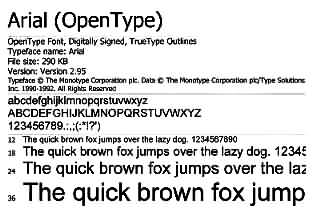 Pattern Fonts, results (4x enlargement)
Test table, scanning
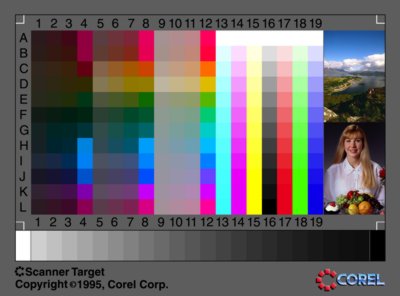 Pattern (test file for comparison with the original, TARGET.TIF, 340 KBytes) Scanning of the test page
So, the best mode for color samples is 300 dpi - 600 dpi as in higher resolutions the transport mechanism is affecting the quality. Scanning of a newspaper-quality text
Undoubtedly, 150dpi suits excellently for sampling scanned texts. Test table, printing
We enlarged the samples so much so that you can estimate processing quality. The natural size is three time smaller: Fragments of the natural size
Test table fragments enlarged to the A4 format
The noise level of the HP PSC950 in the printing mode is very low (see the table in the beginning). In all modes we noticed almost no noise, just a bit in the "draft" one. When paper proceeds for printing there is no buzzing or rattling, just a delicate click. The Cancel button will help you cancel printing at the very last moment and save on, for example, expensive photo paper. A bit of comment on the medium. I'd recommend that you don't use 60g raw paper and the staff like that for such an excellent device! The HP PSC950 will definitely swallow it, but you better not do it. The device suits excellently for various presentations. Of course, I don't mean color-separation printing, it would be too cool for an office device:) I hope nobody would like to try to print on an expensive transparent medium in the normal mode. The test shows that there are almost no differences between the best and normal modes. Nevertheless, it is not a medium you should save ink or time on. Test table, copying
As you can see, the quality grows as the mode changes from "fast" to "best quality". Unfortunately, we are not able to deliver the impression we have on the scanning and further processing of the shots on the glossy paper via the Internet. Topographical materials, copyingQuite often one has to copy topographical materials in haste: magazine pages, newspapers, business documents and other similar stuff. As an example of this I chose an offset printed jacket of my favorite book (pocket size, 105 x 170 mm), and as an example of newspaper printing I took some pages from this book.
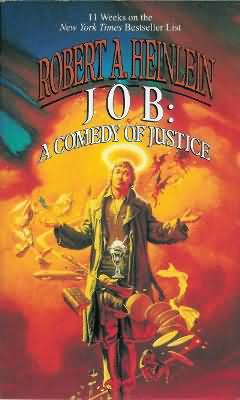 This test was carried out in all possible modes, and below we showed the most popular ones.
Again, I can't deliver completely the difference between the standard and glossy paper. Although the quality of printing on the standard paper is excellent, the gloss of the photo paper makes the difference tremendous. However, it should be noted that color copying on the standard paper in the normal mode was very close to the best one. The best results of printing on the standard paper in the monochrome mode are obtained in the best mode, but again they are very close to the normal mode and much far from the fast one. The HP PSC950 also offers poster mode and 2 pages on 1 options. The HP PSC950, like its junior model HP PSC750, is able to copy an original with enlargement up to 3 x 3 of a sheet of the A4 format in the auto mode. The 2 pages on 1 allows scanning two originals into the HP PSC950's memory so that two images can be printed out on one sheet. Operation with a card readerThis is a simple test: we just made a photo and then inserted the card from the camera into the card reader:
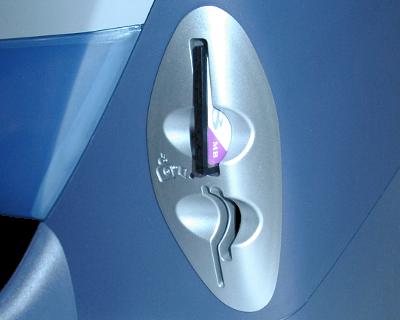 After that you are to choose in the menu what do you like to do with the images - print out the cards' contents on a sheet of paper, print out a certain image or copy the files onto the hard drive. Any of the tasks will take you just several seconds.
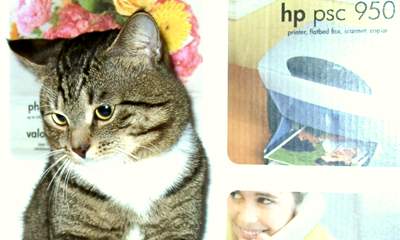 Unfortunately, the integrated card reader is meant only for flash cards. It is excellent that the HP PSC950 can work with images on Compact Flash Type I & II, Smart Media and Memory Stick cards without the PC's help, but I hope that future versions will be of the Storage Class, i.e. not only for reading but also for recording of information onto flash cards. There is one more thing I'd like to be presented here. As this device can be connected to a telephone line and dial numbers then why wouldn't the developers supply it with a receiver somewhere on its side? ConclusionHighs:
Lows:
Write a comment below. No registration needed!
|
Platform · Video · Multimedia · Mobile · Other || About us & Privacy policy · Twitter · Facebook Copyright © Byrds Research & Publishing, Ltd., 1997–2011. All rights reserved. | ||||||||||||||||||||||||||||||||||||||||||||||||||||||||||||||||||||||||||||||||||||||||||||||||||||||||||||||||||||||||||||||||||||||||||||||||||||||||||||||||||||||||||||||||||||||||||||||||||||||||||||||||||||||||||||||||||||||||||||||||||||||||||||||||||||||||||||||||||||||||||||||||||||||||||||||||||||